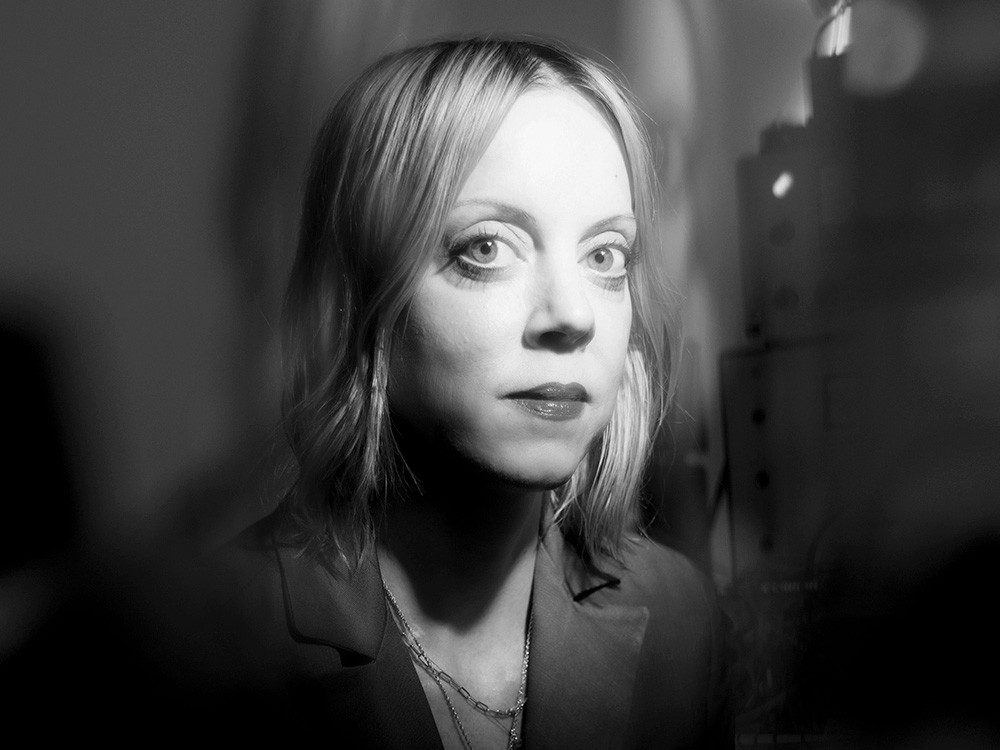Victoria Keddie is an artist who works with sound beyond structured language, exploring the instability of communication through error, interference, and the residual artifacts of transmission. Her work examines disruption, ambiguity, and noise as active sites of meaning-making, analyzing how language fractures and redefines itself through technological mediation and sonic fragmentation. For over a decade, Keddie served as Co-director of E.S.P. TV, exploring the televisual medium for performance.
She has performed live, with commissioned compositions, and exhibited internationally, including The Barbican, London; Fridman Gallery; Performa Arts; The Swiss Institute; Pioneer Works; The Kitchen; The Museum of Art and Design, New York; Museum Angewandte Kunst, Frankfurt; KØS Museum for Art in Public Spaces, Köge; Espace de l’art Concret, Paris; The Goethe Institute, Bogotá; Syros International Film Festival, Syros; Sight + Sound Festival, Montreal. Recent fellowships include, NYSCA/NYFA for Music/Sound (2022), the Max Planck Institute for Empirical Aesthetics (2023), and the Bemis Center for Contemporary Art, Sound Art, and Experimental Music Fellowship (2024). In 2025, she was a featured speaker and performer at the Salon Sophie Charlotte, Berlin-Brandenburgische Akademie der Wissenschaften, and served as Composer-in-Residence at the Elektronmusikstudion in Stockholm.
discography:
Drift Choir, upcoming 2026
This 40-minute composition was formed from thirty days of continuous, multi-camera and microphone recordings (May 1-30, 2025) across four sites— Juan’s studio in Bogotá, Stellage in Athens, Liebig 12 in Berlin, and Various Artists in New York City — and was live-processed and mixed at EMS in Stockholm as a composer-in-residence, June 2025. Structured in five movements (Conversations, Disintegrations, Polyphony, Clocks, and Silences), the work explores modes of listening in-between: where voices drift and overlap, where interference and transmission errors become part of the texture, and where silence is charged with the presence of what is barely heard. It is less about achieving clarity or precision than about attunement — to one another, to place, and to the fragile thresholds between sound and its disappearance. The piece exists as a multi-channel sculptural sound and video installation, as well as compositions for binaural and stereophonic listening.
Pshal P’shaw, Raster Media, 2024
Pshal P’shaw investigates the sonic instability of speech—where phonetic dissonance, vocal fragmentation, and gestural sound challenge structured linguistic norms. Developed during Keddie’s residency at the Max Planck Institute for Empirical Aesthetics, this work explores how speech patterns morph in response to unfamiliar dialects, sonic environments, and computational intervention. By positioning phonetic instability as an expressive and cognitive site, this work aligns with Keddie’s broader research on interstitial sonic spaces—the liminal areas between signal and noise, order and disruption, articulation and abstraction.
Electrona in Crystallo Fluenti, 40.7128° N, 74.0060°, Fridman Gallery, 2022
Through live composition and real-time interaction with orbiting debris, I employ sound as a medium to enter this orbital space, using NASA-provided data to track debris in real time and map its orbits over specific coordinates. Amidst the televisual static, each object’s voice mirrors its circumstance, moving like a disenchanted body through obstruction, then fading into entropic submission—a poetic representation of the intricate, dynamic narrative embedded in the remnants of our technological past.
Apsides, Chaikin Records, 2020
Each of Apside’s seven electronic soundscapes derives from the orbiting of space debris, tracked in real time using Keddie’s custom-built software. Data of proximity, distance, and attitude variance are rendered into sound through analog synthesizers, signal generators, samplers, voice, and more. The rawness of electricity is sculpted into thematic patterns, melodic shapes, and textured environments while straddling a compositional line between chance and control. Musical reference points include Laurie Spiegel, Maryanne Amacher and Delia Derbyshire. Thematically, Apsides depicts a sonic portrait of the interaction between humankind and its culturally entrenched position within technological systems and media ecologies. This relationship merges the animate with the inanimate in a congealed ‘machinic’ exchange between signal and receiver.
Additional works :
Utterances, Tree Aid, a compilation curated by Martin Hossbach (DE), 2025.
Cannibal Mecanique, single lathe-cut, ICM (UK), 2017.
Sensory Feedback, Echos and Reflections, Acoustic Atlas, compilation curated by Cobi van Tonder, University of York (UK), 2022.
Photo credit: Lauryn Siegel, 2025
